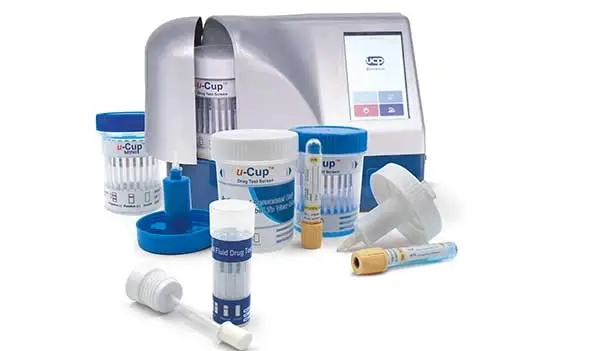POCT Platform

Vörulýsing
Platform tests are diagnostic tests that are done using devices or systems that automate or simplify the process of conducting tests. These tests use automated platforms to process patient samples, detect and analyze the presence of specific molecules, genetic markers, or pathogens in bodily fluids or tissues. Examples of platform tests include rapid antigen tests, PCR tests, and next-generation sequencing technologies. Platform tests provide results quickly, are highly sensitive, specific and accurate, and are used in many areas of medical research and healthcare. Platform tests have become an indispensable tool for point-of-care diagnostics, infectious diseases surveillance, and epidemiological monitoring of diseases.
Types of POCT Platform
Colloidal Gold Platform
The colloidal gold platform is a type of point-of-care diagnostic test that uses gold nanoparticles to produce a color change in the presence of specific antibodies or antigens in a patient's sample. This platform provides quick and accurate results, with high sensitivity and specificity. Colloidal gold platforms are used in various medical applications, including infectious disease testing and drug, pregnancy.
Immunofluorescence Platform
The immunofluorescence platform is a laboratory technique that uses fluorescently-labeled antibodies to visualize and identify specific proteins or other molecules within cells or tissues. This method is commonly used in medical research and diagnostics, as it allows for high-resolution imaging of cellular structures and functions.
AFS2000A Immunofluorescence Platform Instrument
AFS-1000 Immunofluorescence Adaptation Instrument
POCT Platform Faqs
Q.
How Does Colloidal Gold Platform Work?
A.
Colloidal gold platform works by binding gold nanoparticles to a specific probe, such as an antibody or oligonucleotide, that binds to the target molecule of interest. The gold nanoparticles produce a visual signal that can be detected using various methods such as visual inspection, microplate readers or microscopy.
Q.
What Are The Advantages Of Colloidal Gold Platform?
A.
Colloidal gold platform has several advantages, including high specificity, sensitivity, stability and reproducibility, making it ideal for a variety of applications such as immunoassays, molecular diagnostics and biosensors.
Q.
How Is Colloidal Gold Platform Used In Diagnostics?
A.
Colloidal gold platform is used in diagnostics by conjugating gold nanoparticles to specific probes that bind to disease biomarkers present in clinical samples such as blood, urine, or saliva. The resulting signal can be quantified using various methods, such as optical or electrochemical detectors, to determine the presence and concentration of the biomarker.
Q.
What Is The Principle Of Immunofluorescence Platform?
A.
The principle of Immunofluorescence platform involves the use of fluorescently labeled antibodies, which bind with high specificity to the target molecule, and emit light upon exposure to a specific wavelength of light.
Q.
What Are The Limitations Of Immunofluorescence Platform?
A.
The limitations of Immunofluorescence platform include the need for specialized equipment and expertise, possible autofluorescence or background signal, and the potential for photobleaching or phototoxicity.

